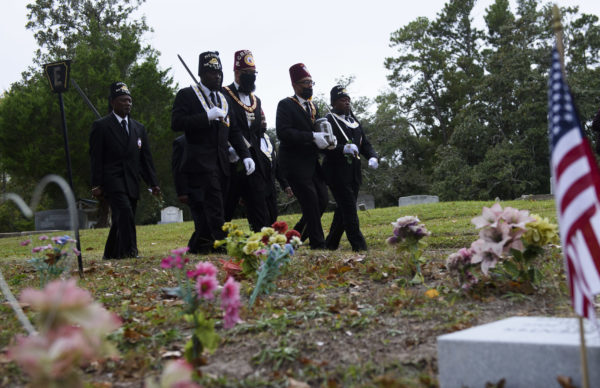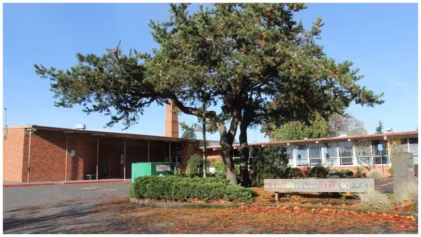Joshua Halsey was about 46 years old when he was killed in the infamous Wilmington Race Riot. This past weekend some of his descendants, local activists and other members of the North Carolina community he lived in held a funeral for him as part of days of activities leading up to the 123rd anniversary of Nov. 10, 1898.

Third Person’s Project, a nonprofit documentary research group aimed at undoing acts of historical erasure through research and the use of modern technology, initially identified Halsey’s unmarked grave last month, which marks one known resting place of possibly 250 victims, the Wilmington Star-News reported. Halsey also received a new headstone recently.
Jeremiah Johnson, who worked on the project, told CNN that “It was the tireless efforts by the project to locate the unmarked graves and no small amount of sleuthing — not just combing through a Black cemetery’s records — that led to the discovery.”
The identification of Halsey and another person, Samuel McFarland, as victims was made public following a state report in 1998 which also marked the 100th anniversary of the massacre.
The Nov. 6 funeral was part of a series of events from Nov. 1 to 10 by the county, the city of Wilmington and several organizations created to honor those who lost their lives during the attack. Rev. William Barber II of the Poor People’s Campaign — a social justice movement inspired by Martin Luther King Jr. — gave the eulogy. Halsey’s descendants were also in attendance.
Wilmington was the largest city in North Carolina in 1898, and it was majority-Black then. Its members “were employed in all segments of the workforce, as professionals, skilled artisans, government employees, maritime crew members, industrial workers, laborers and domestics,” the 1898 Wilmington Race Riot Commission revealed.
The violent attacks took place shortly after the Democratic Party, the party of white supremacy at the time, won the local election on Nov. 8 through intimidation tactics and tampering with the returns, the commission reported.
Inflamed by an orchestrated and months-long campaign of race-baiting, on the morning of Nov. 10 a group of some 500 heavily armed white men burned down the city’s Black newspaper, The Daily Record, and later that day a far larger crowd of some 2,000 whites began attacking any Black people they could find in Wilmington.
The event, which broke the back of the Black-white coalition that had been known as the Fusion party, has been regarded as the only successful coup d’état in United States history.
Elaine Cynthia Brown, a Halsey descendent, described the discovery of Halsey’s grave as “surreal,” telling the news outlet, “We were in shock, because this is so unprecedented. But then we said, ‘You know what? Why not Joshua?”
Brown continued, “Why not be the beacon of what can happen when we sort of unearth the truth, uncover the truth and unpack it? You know, this is where it’s going to start and the stories are going to come out as more victims are found, and we hear their stories. But we now know that it exists. We now know that we can change it. We now are getting the true history of what happened here.”
Halsey’s great-granddaughter Gwendolyn Alexis teaches Black history, including that of Wilmington, and was shocked to find out her relative had been part of it. “And when I found out that my great-grandfather was killed, one of the people killed, it took my breath away,” she told CNN. “Because not only did I find family, I found history,” and it made it much more real, she said.


